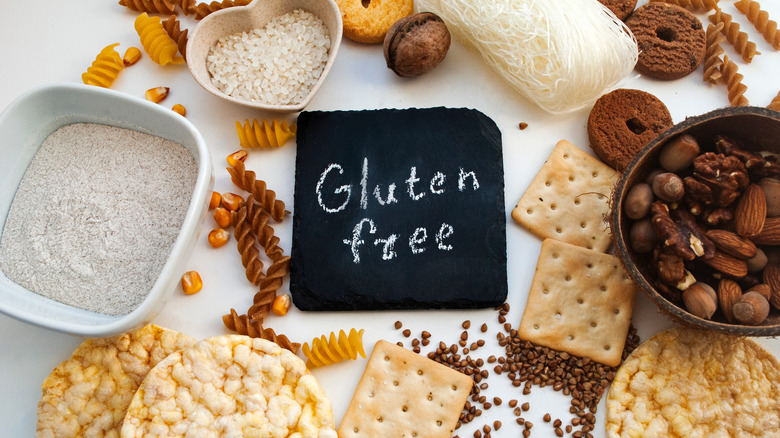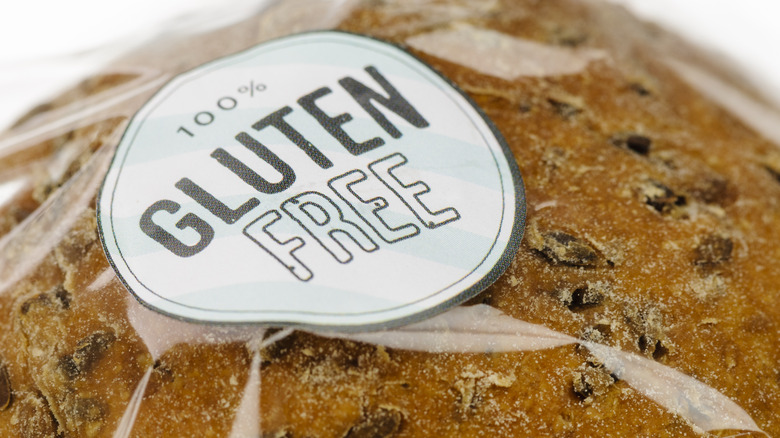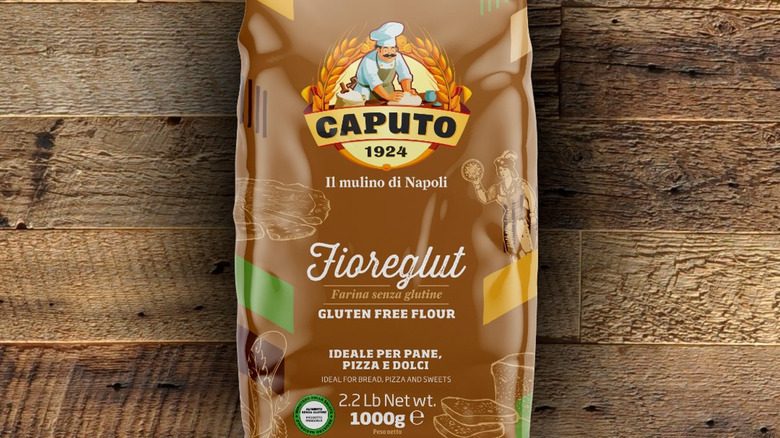The Gluten-Free Flour That Is Somehow Still Made Of Wheat
If it seems like the gluten-free section of your supermarket is growing, it is. According to Statista, the number of new gluten-free products introduced was as low as 180 new products in 2017. Three years later that number exploded to 966 new products. About 20% of Americans adhere to a certain amount of a gluten-free diet, per the National Library of Medicine.
Gluten is a protein that's found in many types of grains (per Harvard Health Publishing). Barley and rye contain gluten, but wheat is far and away the most common source of gluten. Wheat is everywhere, which makes avoiding gluten a bit of a challenge. And living gluten-free is not cheap as products are a whopping 242% more expensive than gluten-containing products.
According to CNET, there are three reasons why people go gluten-free. All of the various versions of low-carb diets, like Keto, and Paleo, have driven more than just wheat off of people's plates. The second reason is that there is some scientific debate on how much of the proteins in wheat, including gluten, we actually need. Those debates continue, including some that are studying if gluten sensitivity is actually caused by gluten. Finally, people diagnosed with Celiac disease cannot eat gluten at all. In this case, eating gluten inflames the lower intestine, which inhibits nutrient absorption. Untreated, this can lead to diabetes, cancer, and multiple sclerosis (via Celiac Disease Foundation).
No wheat, now what?
In food, gluten proteins link together to provide the chewy framework for bread and pasta (per Healthline). That Framework also traps gasses in bread, allowing it to rise, and it can also be isolated and used as an additive that helps achieve food texture and moisture retention.
Without the building block of gluten, typical wheat alternatives tend to yield squat. Women's Health offers 13 wheat flour substitutes, like white rice, chickpea, or coconut flour. Almond flour has become a very popular, readily available substitute. However, these flours are tough to sub for wheat.
On Reddit's r/glutenfree forum, there's a new flour blend that's being praised for its ability to make bread rise and have the texture of wheat flour. Many of the recipes are from The Gluten Free Austrian and many are written specifically for this flour blend that doesn't behave like traditional flour, even typical gluten-free blends. The secret ingredient? Wheat starch.
Gluten-free wheat
Dr. Schär produces many gluten-free products using wheat starch. Grains, like wheat, are composed of starch, protein, and fiber. The entire grain is ground, you'll have whole-grain flour. But, those three components can be isolated. Gluten is pulled from the grain and used as a dough strengthener, or to make seitan, a protein-rich meat-free substitute.
In the case of wheat starch, the starch is dissolved into water, then that slurry is dried. The end result is a super fine powder that looks exactly like cornstarch. However, these starches don't behave in recipes the same way. Unlike cornstarch, which breaks down at higher temperatures, wheat starch can withstand the higher temperatures needed for bread baking.
That slurry of wheat starch and water should be free of wheat's proteins, including gluten. There may be a trace amount remaining, but the FDA allows up to 20 parts per million of gluten to still be labeled "gluten-free," "no gluten," "free of gluten," or "without gluten." At that minuscule amount, most people with Celiac disease should be fine. But, those with a wheat allergy, which is often confused with Celiac disease, cannot eat wheat starch.
Caputo is an Italian miller that uses wheat starch as a main component of the gluten-free flour blend taking Reddit by storm. Caputo Fioreglut is available on Amazon. It's pricey, $17.50 (plus shipping) for 2.2 pounds, but for those craving gluten-free light, airy, yet still chewy bread, it might be worth it.


